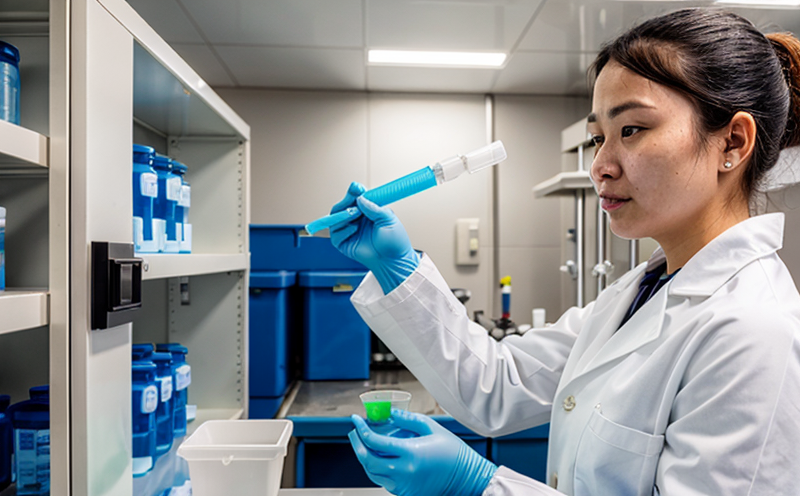USP Media Sterility Suitability Testing
The USP Media Sterility Suitability Test is a critical procedure designed to ensure that media used in the production of pharmaceutical products meet the sterility requirements specified by the United States Pharmacopeia (USP). This test evaluates whether the chosen growth medium is suitable for detecting microorganisms, thereby ensuring product safety and quality.
The process involves inoculating the selected medium with a known quantity of bacteria or fungi. If the medium supports microbial growth as expected, it passes the sterility suitability test. Any failure indicates that the medium may not be reliable for detecting contamination during manufacturing processes. This is crucial in pharmaceutical settings where even minimal microbial presence can compromise product integrity and patient safety.
The USP media sterility suitability test plays a pivotal role in quality assurance by providing assurance to manufacturers, regulators, and end-users about the reliability of their growth media. It ensures that the media used in production processes are capable of detecting microorganisms effectively, thereby preventing potential contamination issues.
According to USP General Chapter 0123, this test is essential for ensuring that the media used in microbial testing are suitable for their intended purpose. This chapter provides detailed guidelines on how to conduct the sterility suitability test, including the types of growth media and the conditions under which they should be evaluated.
The following steps outline a typical USP Media Sterility Suitability Test:
- Inoculate the selected medium with known quantities of bacteria and fungi.
- Cultivate the inoculated samples for an appropriate period to allow growth if present.
- Examine the media for signs of microbial growth. The test passes if no growth is observed, indicating that the medium supports sterility.
This test ensures that manufacturers select reliable and consistent media for their production processes, thereby maintaining product quality and safety standards.
| Parameter | Description |
|---|---|
| Sterility Suitability Test Methodology | Inoculation with known microorganisms followed by incubation to observe growth or sterility. |
| Acceptance Criteria | No visible microbial growth indicates suitability; any growth suggests potential issues. |
By adhering to these rigorous standards, pharmaceutical manufacturers can ensure that their products are safe and meet regulatory requirements. This test is particularly important for those working in sterile environments where even the slightest contamination could lead to significant risks.
Scope and Methodology
The USP Media Sterility Suitability Test encompasses a series of steps designed to assess the suitability of growth media for detecting microorganisms. This section provides an in-depth look at the methodology involved, from specimen preparation to final evaluation.
| Step | Description |
|---|---|
| Select appropriate growth media | Pick media suitable for detecting bacteria and fungi based on USP guidelines. |
| Inoculate the medium | Add a known quantity of microorganisms to the medium. |
| Incubate the samples | Cultivate the inoculated media under specified conditions, typically at 35°C for 48 hours. |
| Evaluate for growth | Examine the media for any signs of microbial activity. The test passes if no growth is detected. |
The methodology ensures that only reliable and consistent media are used in production processes, thereby minimizing the risk of contamination and ensuring product quality and safety.
For a more detailed understanding of the methodology, please refer to USP General Chapter 0123.
Why Choose This Test
- Ensures the reliability of growth media used in microbial testing.
- Maintains product quality and safety by detecting potential contamination issues early.
- Promotes compliance with USP standards, enhancing regulatory acceptance.
- Reduces the risk of introducing harmful microorganisms into pharmaceutical products.
The USP Media Sterility Suitability Test is essential for any organization involved in the production and quality control of pharmaceuticals. By choosing this test, you can ensure that your media are suitable for their intended purpose, thereby maintaining product integrity and patient safety.
Use Cases and Application Examples
The USP Media Sterility Suitability Test is widely used in various pharmaceutical applications to ensure the reliability of growth media. Here are some specific use cases:
- Blood Plasma Collection: Ensures that media used in processing blood plasma are free from microbial contamination.
- Vaccine Manufacturing: Validates the sterility suitability of media used in producing vaccines to ensure they do not introduce harmful microorganisms.
- Oral Medicines Production: Guarantees that the growth medium used in manufacturing oral medications is capable of detecting any potential microbial contamination.
| Use Case | Description |
|---|---|
| Blood Plasma Collection | Ensures media are free from contaminants that could affect the safety and efficacy of plasma products. |
| Vaccine Manufacturing | Validates that vaccines produced using suitable growth media do not contain harmful microorganisms. |
| Oral Medicines Production | Maintains product integrity by ensuring the presence of reliable and consistent media for microbial testing. |
The versatility of this test makes it a cornerstone in the quality control processes of pharmaceutical manufacturing, where reliability is paramount.





